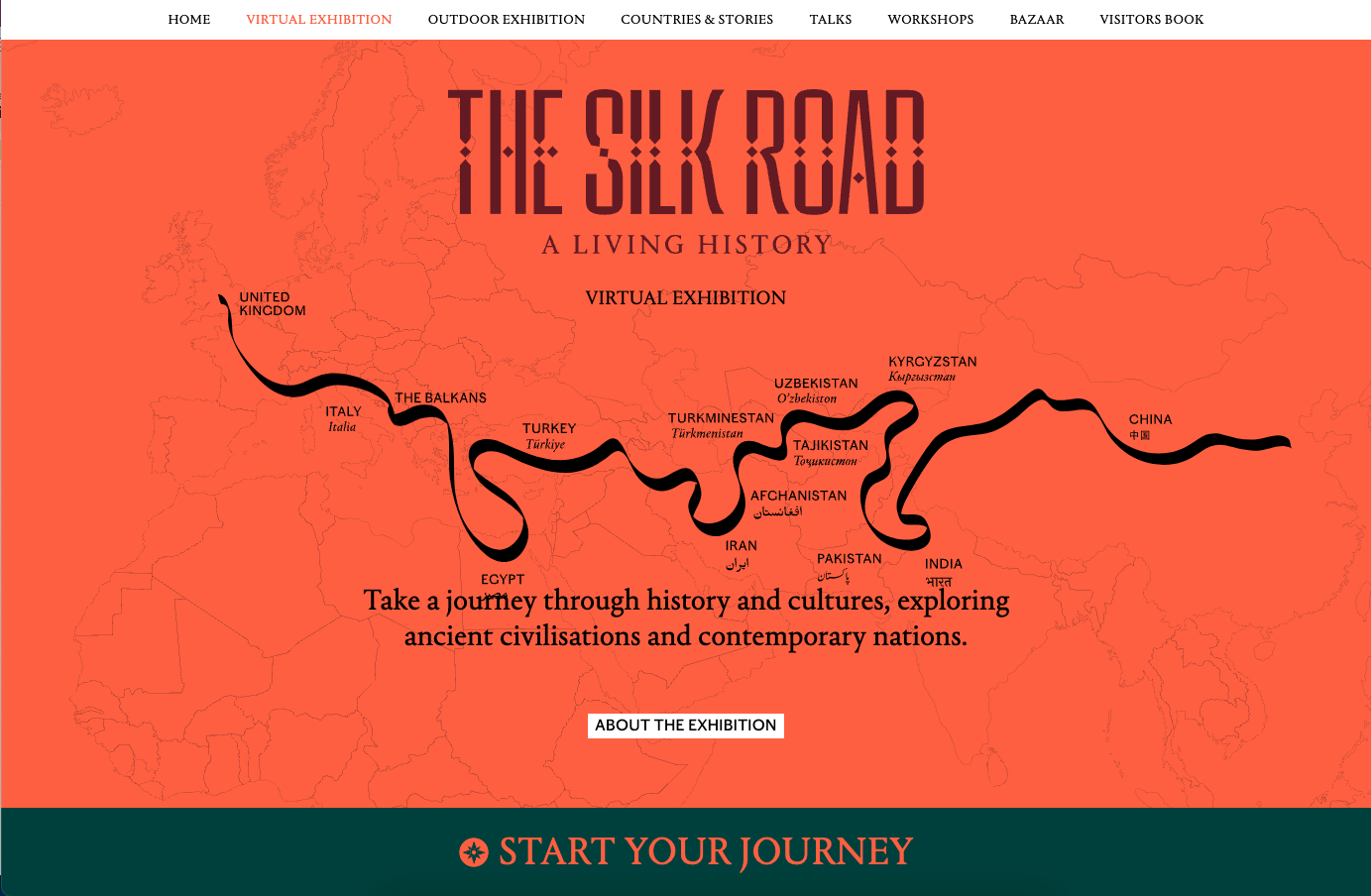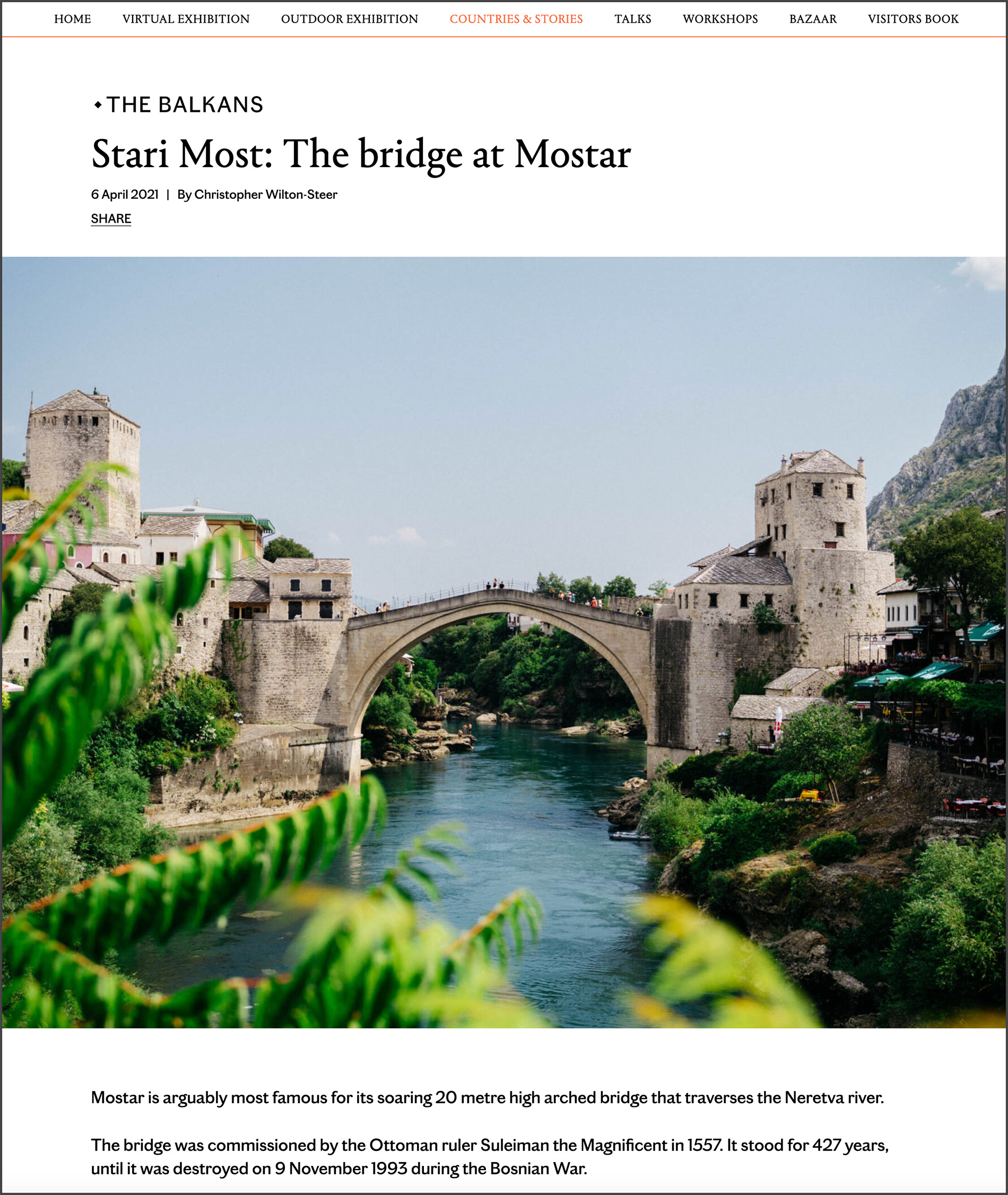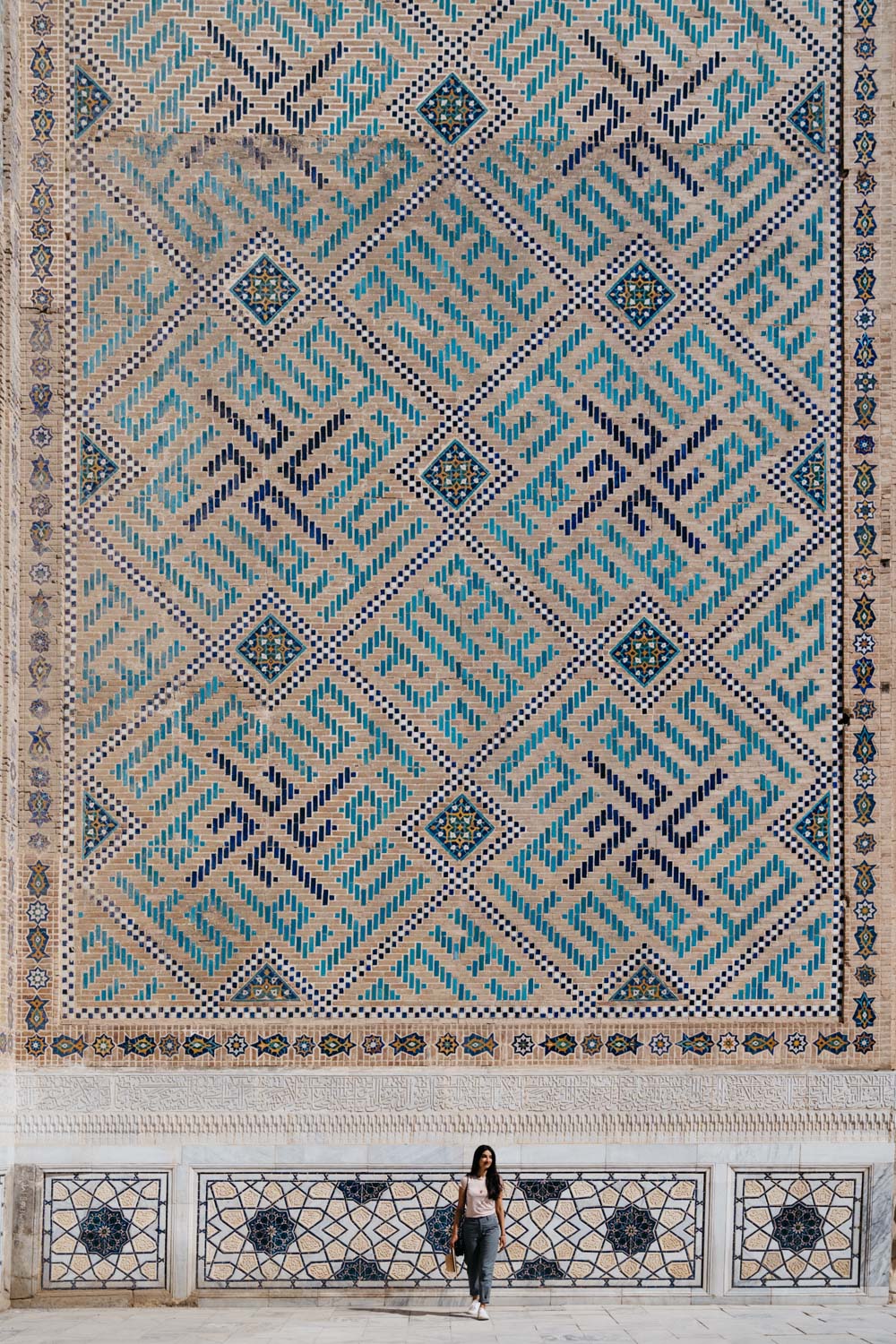The Aga Khan Foundation is delighted to announce the launch of ‘The Silk Road: A Living History’ virtual exhibition by travel photographer Christopher Wilton-Steer.
The virtual edition presents the photographs from the original outdoor exhibition alongside video and audio content as well as photo essays and travel writing allowing visitors to explore even more of the Silk Road.
Between 2021 and 2022, thousands of people visited the outdoor exhibitions in London’s King’s Cross and in the Aga Khan Park in Toronto. This new online version now allows anyone anywhere with an internet connection to take a virtual 40,000km journey along the world’s most celebrate trade route.
The exhibition documents Wilton-Steer’s journey along the historic trade route undertaken in 2019. Over a period of four months in 2019, he travelled overland by car, bus, train, ferry, horse and camel from London to Beijing traversing sixteen countries.

The exhibition celebrates the diversity of cultural expressions found along the Silk Road, highlights examples of how historical practices, rituals and customs live on today, and also reveals some of the connections between what appear at first glance to be very different cultures. It also seeks to engender interest and understanding between distant cultures and challenge perceptions of less well known and understood parts of the world. Photographs from Iran, Turkmenistan, Uzbekistan, Tajikistan, Kyrgyzstan, Pakistan, India, China and elsewhere feature in the exhibition.
The virtual exhibition provides access to additional video content
Aneta Anna, who visited the open-air exhibition in Granary Square last year, said: “What an inspiring journey, beautifully captured in every photo. The Silk Road exhibition is a mesmerising piece of work that takes [you] on a journey through majestic landscapes and their precious communities.”

The Silk Road, the name given to the numerous trading routes that connected China and the West, was first established during the days of the Roman Empire. For several centuries it facilitated the exchange of goods, ideas, religions and technologies across 1000s of miles, shaping and changing the world as we know it. While it lost its prominence to new maritime trade routes by the 1600s, its legacy still endures. China’s ‘Belt and Road Initiative’, the $900 billion double trade corridor to reopen channels between China and the West, can be seen as its 21st century successor.

Wilton-Steer, who leads communications at AKF, says: “When we fly somewhere, we arrive at the destination and all aspects of life are different. By traveling over land, I hoped to learn more about our similarities and what connects us.”
Established in 1967, AKF works with marginalised communities in Africa, Asia and the Middle East to tackle the root causes of poverty. Together with its sister agencies of the Aga Khan Development Network, it has been active in Central Asia for nearly 30 years, and for almost a century in India and Pakistan. Working alongside governments, the AKDN has been a long-term partner in the development of Afghanistan, the Kyrgyz Republic, Tajikistan, Pakistan, India and, more recently, Kazakhstan. In the last 30 years, the AKDN has invested and channelled significant investment into the economic, social and cultural development of Central Asia with the promotion of pluralism and women’s empowerment central to those efforts.


Examples of AKF and AKDN’s work along the Silk Road are documented in the exhibition such as the cross-border bridges connecting Afghanistan with Tajikistan; the remote but state-of-the-art campuses of the University of Central Asia; and restored palaces high up in the Himalayas of northern Pakistan.




